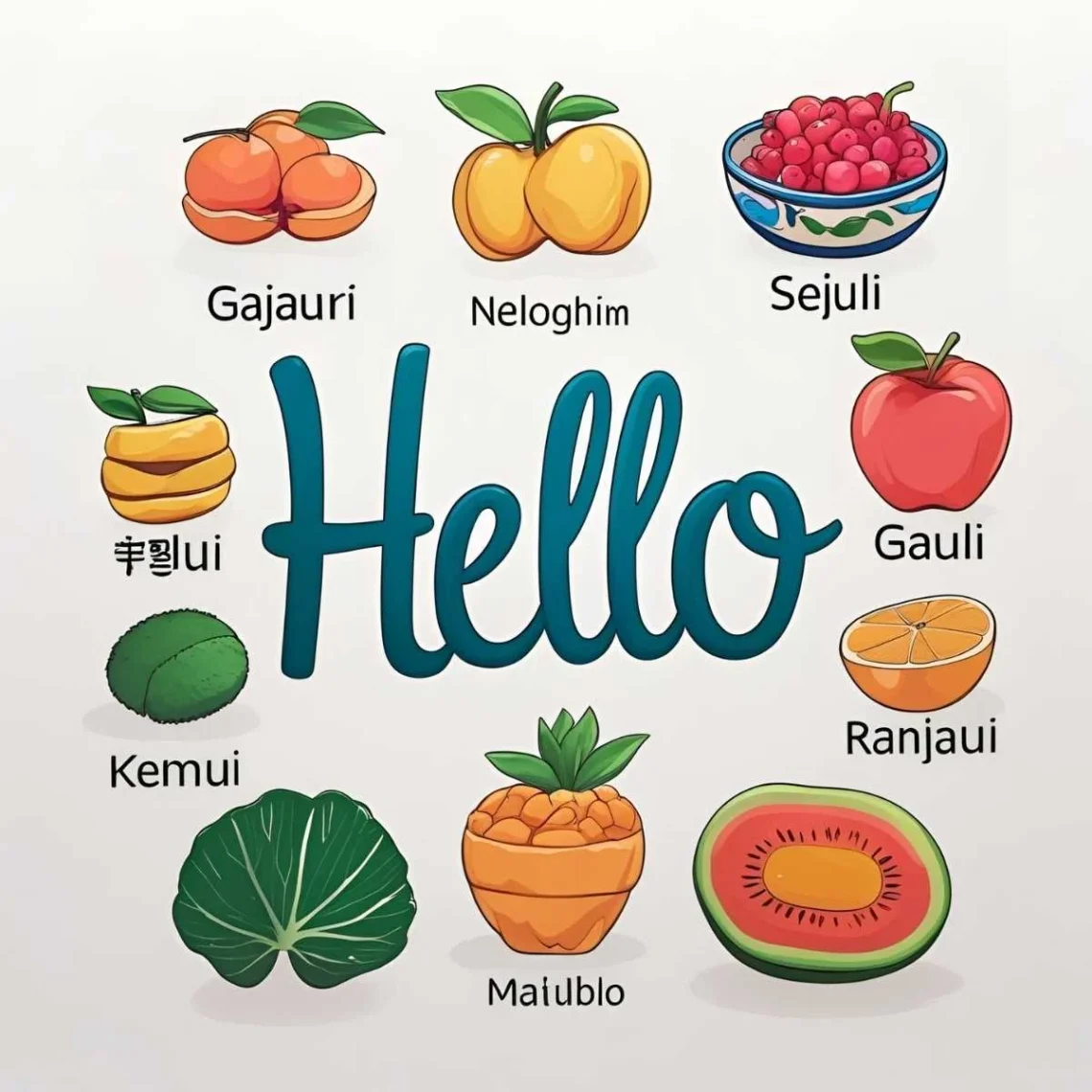Picture yourself stepping off a plane in Rio de Janeiro, greeted with a warm “olá” from a smiling stranger. That simple word, “hello,” sparks an instant connection, transcending borders and cultures.
Whether it’s a cheerful “konnichiwa” in a Tokyo subway or a melodic “salaam” in a Cairo bazaar, the term for “hello” carries a universal invitation to engage, shaped by each culture’s unique warmth.
Let’s embark on a global journey to explore how people say “hello” in different languages and what these greetings reveal about their societies.
Reference Table: “Hello” in Different Languages
| Language | Word/Phrase | Cultural/Linguistic Insight |
|---|---|---|
| French | Bonjour | Means “good day,” used formally and casually in France. |
| Spanish | Hola | A versatile greeting, common across Spain and Latin America. |
| Italian | Ciao | Informal and friendly, used for both “hello” and “goodbye.” |
| German | Hallo | A straightforward greeting, widely used in casual settings. |
| Mandarin | Nǐ hǎo (你好) | Means “you good,” a polite and common greeting in China. |
| Hindi | Namaste | Means “I bow to you,” a respectful greeting in India. |
| Japanese | Konnichiwa (こんにちは) | Means “good afternoon,” used broadly as a hello in Japan. |
| Korean | Annyeonghaseyo (안녕하세요) | A polite greeting, reflecting Korea’s emphasis on respect. |
| Arabic | Salaam (سلام) | Means “peace,” used across 20+ countries with warmth. |
| Swahili | Habari | Means “news,” often used as a friendly greeting in East Africa. |
European Languages: Greetings with Cultural Flair
European languages offer diverse ways to say “hello,” each reflecting cultural nuances. For instance, in French, “bonjour” (good day) is used in both formal and casual settings, embodying France’s love for elegance. Meanwhile, Spanish speakers say “hola,” a versatile greeting heard from Madrid’s cafés to Mexico’s markets, radiating friendliness. Additionally, Italian uses “ciao,” an informal term for both “hello” and “goodbye,” reflecting Italy’s laid-back charm. In German, “hallo” is a direct, no-nonsense greeting, popular in casual contexts, aligning with Germany’s straightforward culture. Thus, these greetings showcase Europe’s blend of formality, warmth, and simplicity.
Asian Languages: Welcomes Rooted in Respect
Asia’s linguistic diversity shapes unique greetings for “hello,” often tied to respect and harmony. For example, in Mandarin, “nǐ hǎo” (you good) is a polite, concise greeting, reflecting China’s focus on positivity. In Hindi, “namaste” (I bow to you) is a respectful gesture, often accompanied by a slight bow, common in India’s spiritual culture. Similarly, Japanese uses “konnichiwa” (good afternoon), a versatile hello that conveys politeness in Tokyo’s bustling streets. In Korean, “annyeonghaseyo” signals respect, aligning with South Korea’s emphasis on hierarchy. Finally, Arabic’s “salaam” (peace), used across over 20 countries like Egypt and Saudi Arabia, offers a warm wish for tranquility, rooted in the region’s poetic traditions. These greetings highlight Asia’s range, from formal respect to heartfelt warmth.
African Languages: Greetings as Community Bonds
In African languages, “hello” often fosters community and connection. For instance, Swahili, spoken in over 20 countries like Kenya and Tanzania, uses “habari” (news), a friendly greeting that invites conversation, often heard in vibrant markets. This term reflects East Africa’s communal spirit, where greetings spark shared stories. While not all African languages are included here due to the focus on 10 languages, Swahili’s “habari” represents the region’s emphasis on warmth and connection, often celebrated in social gatherings.
Indigenous & Island Languages: Warmth in Simple Greetings
Indigenous and island languages express “hello” with simplicity and community focus, though this section is limited to align with the 10-language request. For context, languages like Maori (“kia ora,” meaning “be well”) or Hawaiian (“aloha,” meaning “love” or “peace”) emphasize warmth and connection, often used in communal settings. Here, we focus on the core 10 languages, but these indigenous greetings highlight how “hello” fosters unity in close-knit cultures, from New Zealand to Pacific islands.
Cultural Insights: The Evolution of Greetings
Words for “hello” have evolved with cultural exchanges. For instance, the English “hello” emerged in the 19th century, popularized by telephone use. In Arabic, “salaam” traces back to ancient Semitic roots, symbolizing peace across centuries. Moreover, in Swahili, “habari” reflects trade-era influences, emphasizing shared news. In Asia, greetings like “namaste” and “nǐ hǎo” align with cultural values of respect and harmony, shaped by spiritual and philosophical traditions. These words carry histories of trade, technology, and cultural exchange, uniting people through simple acts of greeting.
Proverbs and Sayings: Wisdom of Greetings
- French: “Un bonjour ouvre toutes les portes.” (A hello opens all doors.) – Highlights greetings as a key to connection.
- Hindi: “Namaste se dil milta hai.” (Namaste joins hearts.) – Emphasizes the emotional power of greetings.
- Swahili: “Habari njema huleta furaha.” (Good news brings joy.) – Ties greetings to positivity.
- Japanese: “Konnichiwa wa kokoro no kakehashi.” (Hello is a bridge to the heart.) – Reflects connection through greetings.
- Arabic: “Salaam yabni al-aman.” (Peace builds safety.) – Links greetings to harmony.
FAQs
Why do some words for “hello” sound similar?
Shared linguistic roots (e.g., Indo-European languages like Spanish and Italian) and cultural exchanges (e.g., Arabic’s influence on Swahili) create similarities.
What’s the oldest term for “hello”?
Arabic’s “salaam,” rooted in ancient Semitic languages (circa 2000 BCE), is among the earliest recorded greetings.
How do cultures shape the term’s use?
Collectivist cultures (e.g., African, Asian) use “hello” to build community, while individualistic cultures (e.g., European) focus on personal engagement.
Conclusion
From “hola” in Spain to “habari” in Tanzania, the word for “hello” weaves a global thread of connection and warmth. Each term, whether the respectful “namaste” in Hindi or the peaceful “salaam” in Arabic, reflects cultural values while celebrating our shared desire to connect. Consequently, these greetings remind us that a simple word can open hearts, uniting all people in a universal welcome. How do you say “hello” in your language, and what stories does it spark? Share your thoughts below—we’re eager to hear your voice!





